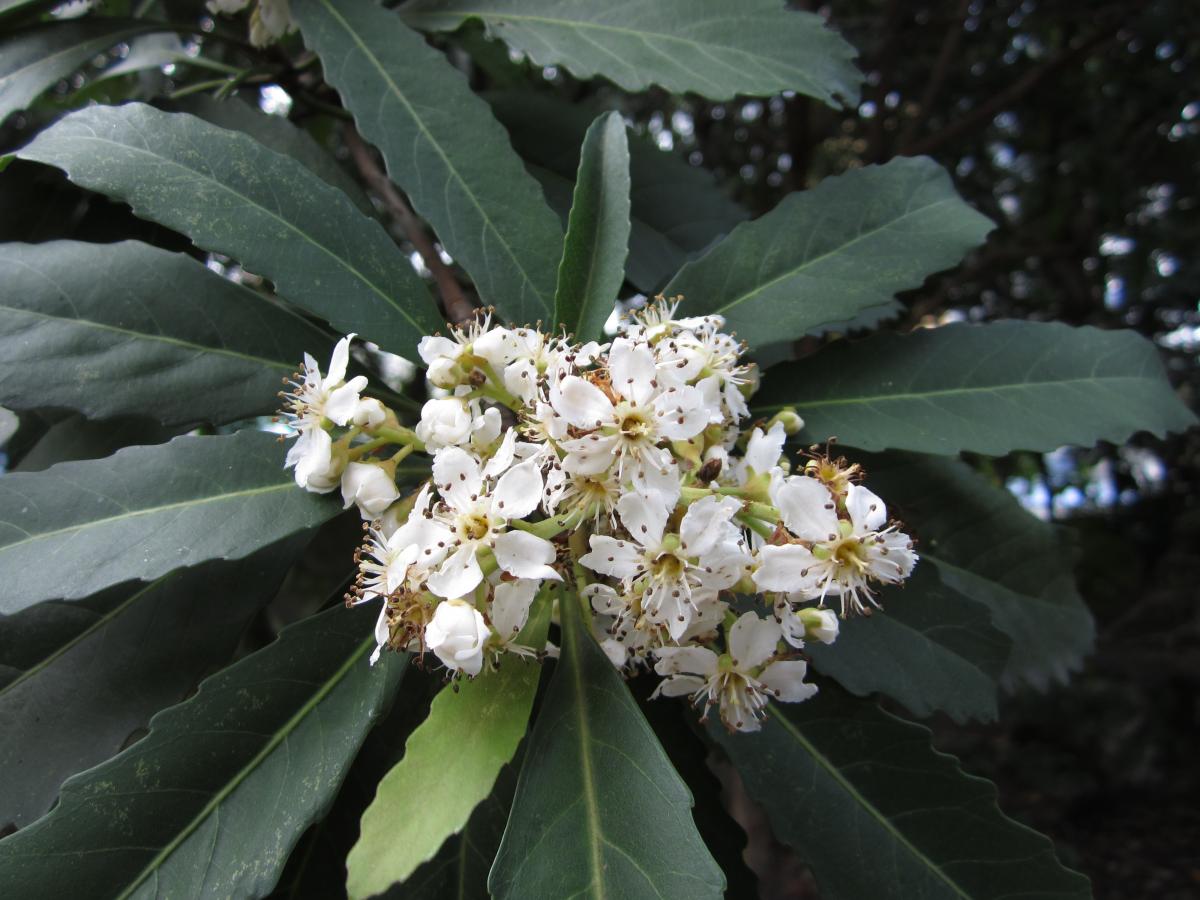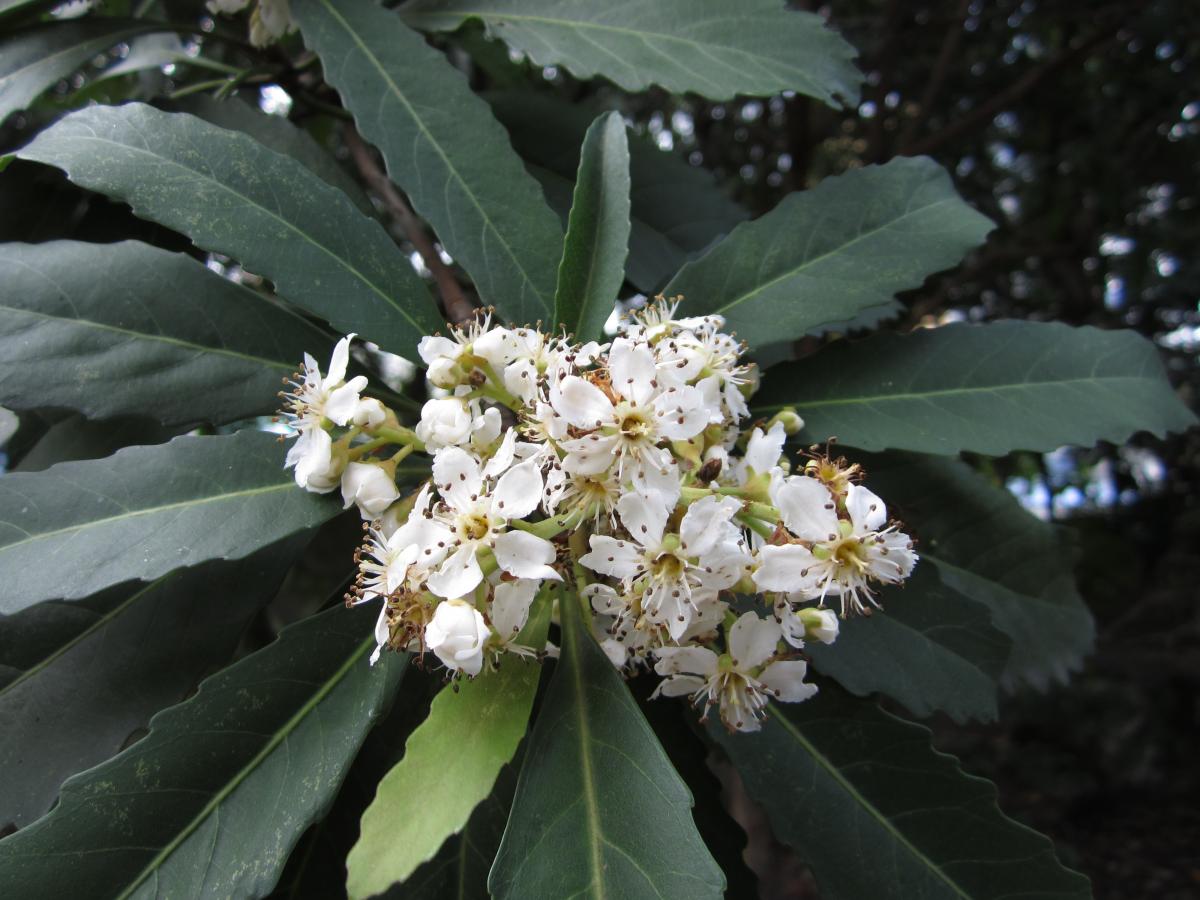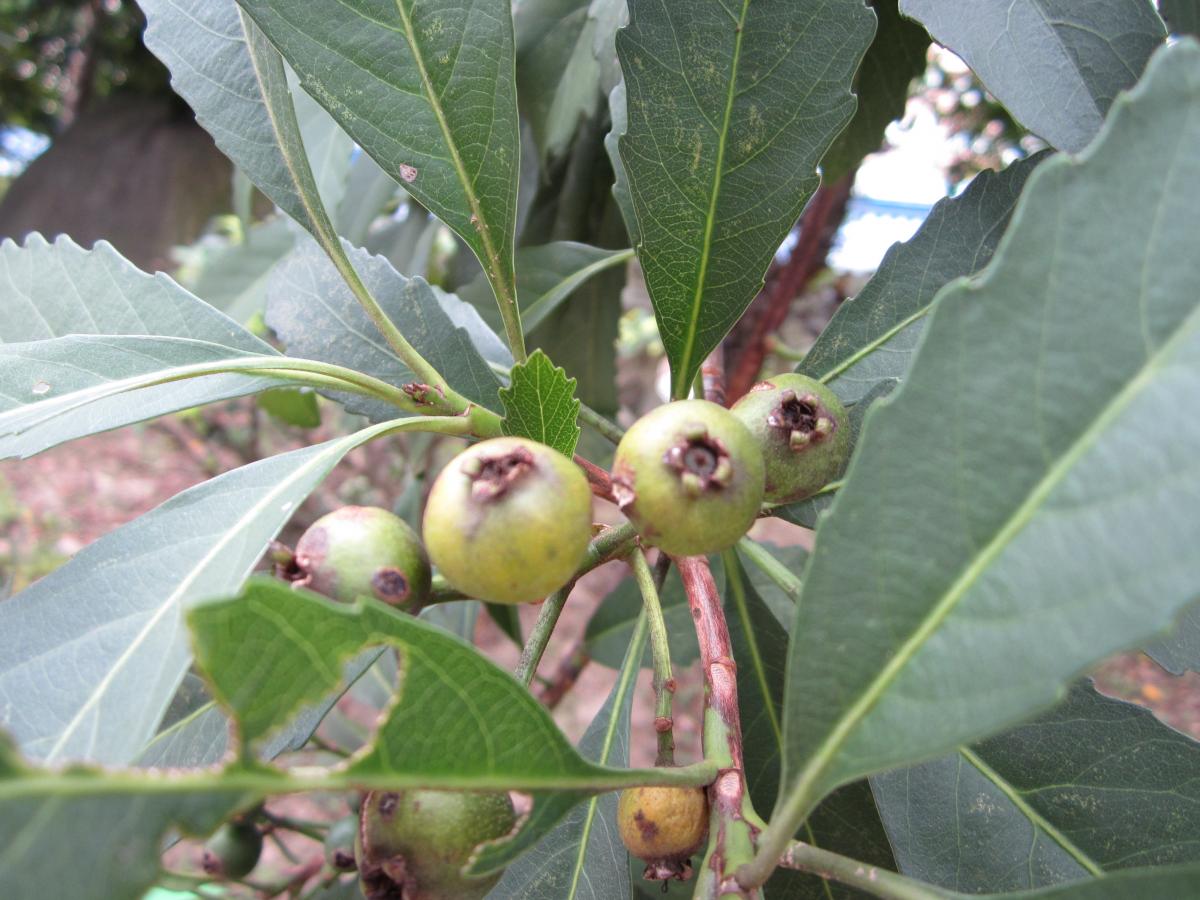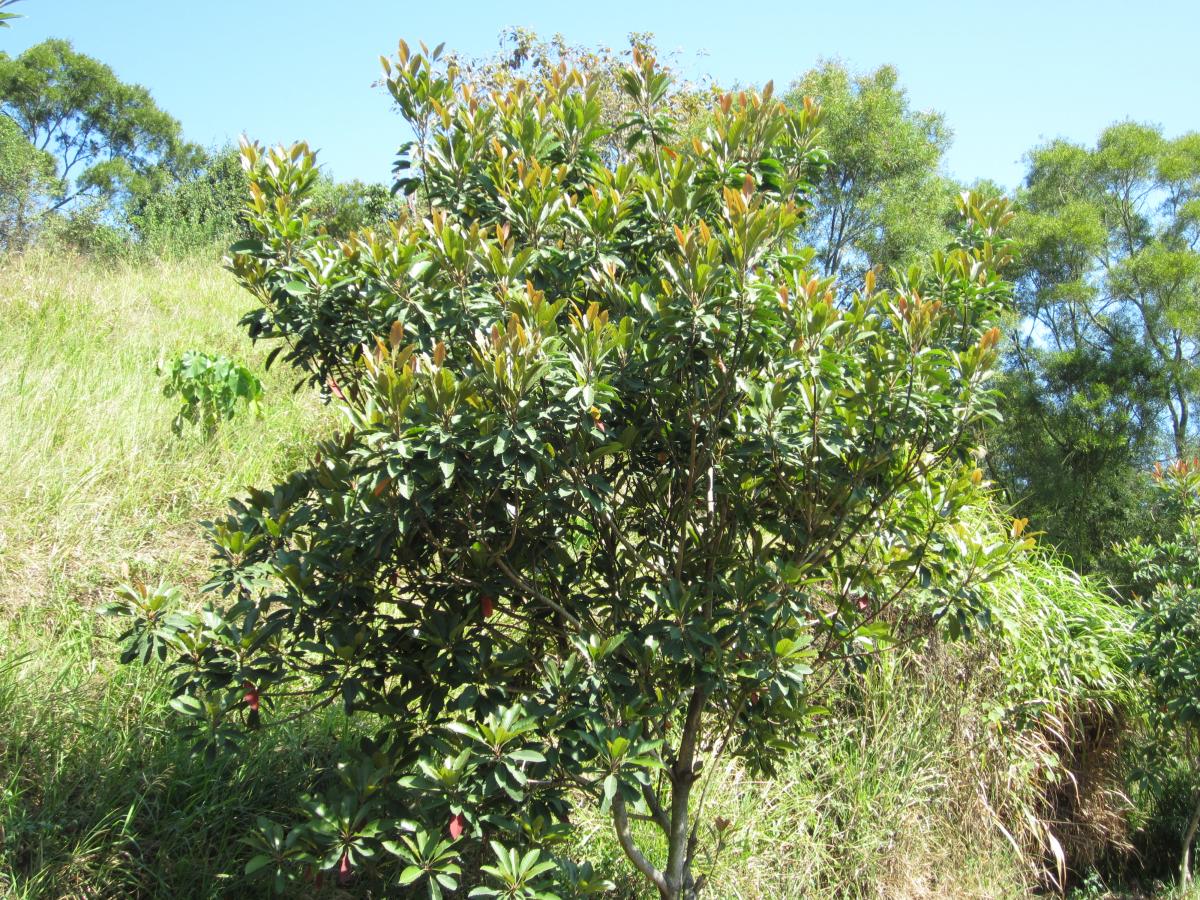薔薇科
學名:Eriobotrya deflexa (Hemsl.) Nakai
英名:Taiwan Loquat
別名:山枇杷、臺灣山枇杷、夏梅
枇杷屬常綠喬木,臺灣原生種。嫩莖、葉、花梗具絨毛,後脫落。葉片互生或集生小枝頂端,革質,長圓形或長圓披針形。圓錐花序頂生;白色花瓣5片,圓形或倒卵形;花期冬~春季。果近球形,熟時呈黃紅色,密被絨毛,內有種子1~2粒。果期春至夏季。
An evergreen tree in the genus Eriobotrya, native to Taiwan. The young stems, leaves, pedicels are coated with villi which will detach with time. Leaves are alternate or connate in the apex, leathery, oblong or oblong-lanceolate. Panicles terminal; 5 white petals in round or obovate shape; flowering from winter to spring. Fruits are nearly spherical, yellowish red when mature, densely villous, containing 1 or 2 seeds. Fruiting from spring to summer.
全日照溫暖環境,對於土壤適應性很廣,其中以排水良好、土壤深厚、有機質含量高之礫質壤土或礫質粘土較佳。以播種、高壓或扦插法繁殖。
The plant enjoys full-sun and warm environments. Highly adaptable to soil, but deep loam soil or gravel clay with good drainage and rich organic matter is preferred. Propagated by seeding, air layering and cutting.
庭園景觀樹,果實可誘鳥,熟果可生食。原本分佈中高海拔山區,但在北部低海拔面東北季風山區亦有生長。這是氣候因素使中高海拔地區植物朝北方低海拔地區下降,稱為「北降現象」,臺灣枇杷即為代表性的北降現象植物。
Suitable for use as a garden landscape tree. The fruits can attract birds, and be eaten raw when mature. The plant used to distribute in high-altitude mountains, are now also visible in the northern low-altitude northeast monsoon windward mountains which is a result of climate change that causes plants distributed the middle and high altitude areas to descend to the low-altitude areas in the north, so called the “distribution descending to northern Taiwan phenomenon”; the Taiwan loquat is a representative plant for the phenomenon.




